Hello friends! Last weekend, I had the great pleasure of visiting the ‘Reimagining the Renaissance’ exhibition at The Art Gallery of South Australia. The exhibition features items from the gallery’s own collection of paintings, sculpture, and decorative arts, alongside loans from other private and public collections.
“Reimagining the Renaissance explores the trajectory of art and culture across the period known today as the ‘Renaissance’, an era beginning at the end of the fourteenth century and culminating three decades later.”
Rather than drive the 1300-plus kilometres from my hometown of Sydney to Adelaide, my husband and I opted to fly, which takes only approximately two hours. After a short Uber ride to the city centre, we checked into the Mayfair Hotel, which is very centrally located and only a short walk from the gallery.
It was then time to see some art! Some of the highlights included this portrait of Henry VIII, after Hans Holbein.
A portrait of Henry’s son and successor, Edward VI, by a member of the circle of William Scrots.
This intriguing painting of Elizabeth I with a prayer book, painted by an unknown artist in c.1565. I was particularly eager to see this portrait, as it’s normally held in a private collection in Melbourne. I also love depictions of a young Elizabeth in the early years of her reign. According to the gallery, the verse, which is traditionally attributed to Elizabeth, is a later addition.
Christ was the word that spake it:
He took the bread and brake it:
And what His word did make it:
that I believe and take it.
Another definite highlight was this portrait of an unknown woman by the workshop of François Clouet, painted in c.1572. I’ve known of this beautiful painting for a long time, so it was such a joy to finally see it in the flesh. While the identity of the sitter is sadly not known, she was obviously a woman of considerable status and wealth. Interestingly, recent conservation work has revealed that the sitter’s dress has been overpainted and the exaggerated puff sleeves are a later addition to the work.
I was equally blown away by this striking portrait of another unknown woman by George Gower, painted in c.1590. It was hard to tear my gaze away! The details are utterly exquisite. As the accompanying label noted, over the years some of the paint has become translucent, revealing ‘pentimenti’, especially on her left hand. This does not detract, though, from the overall beauty of this work.
Once I did manage to rip my gaze away from the above portrait, it landed firmly on another masterpiece—Robert Peake’s painting of Frances, Lady Reynell of West Ogwell, painted in c.1595. Frances was the first wife of Sir Thomas Reynell, who belonged to a distinguished Devon gentry family.
Among the other treasures on display were a miniature of a man by Isaac Oliver, a number of religious artworks, Italian earthenware, marble sculptures and tapestries. But I’d like to end with this beauty! ‘Patience and the seven Christian virtues’ dates from c.1595. It was made in London and it’s believed ‘might refer directly to the virtues of the Virgin Queen, Elizabeth I, given the inclusion of the Tudor and eglantine roses’. It’s a truly stunning object.
I’ve just been warned that I’m ‘near email length limit’! I do hope you’ve enjoyed this look at some of the gems on display in this exhibition, which runs until 13 April 2025. It’s most definitely worth a visit if you’re in the area.
Until next time!
N x

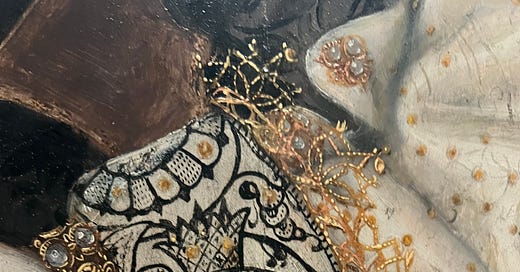



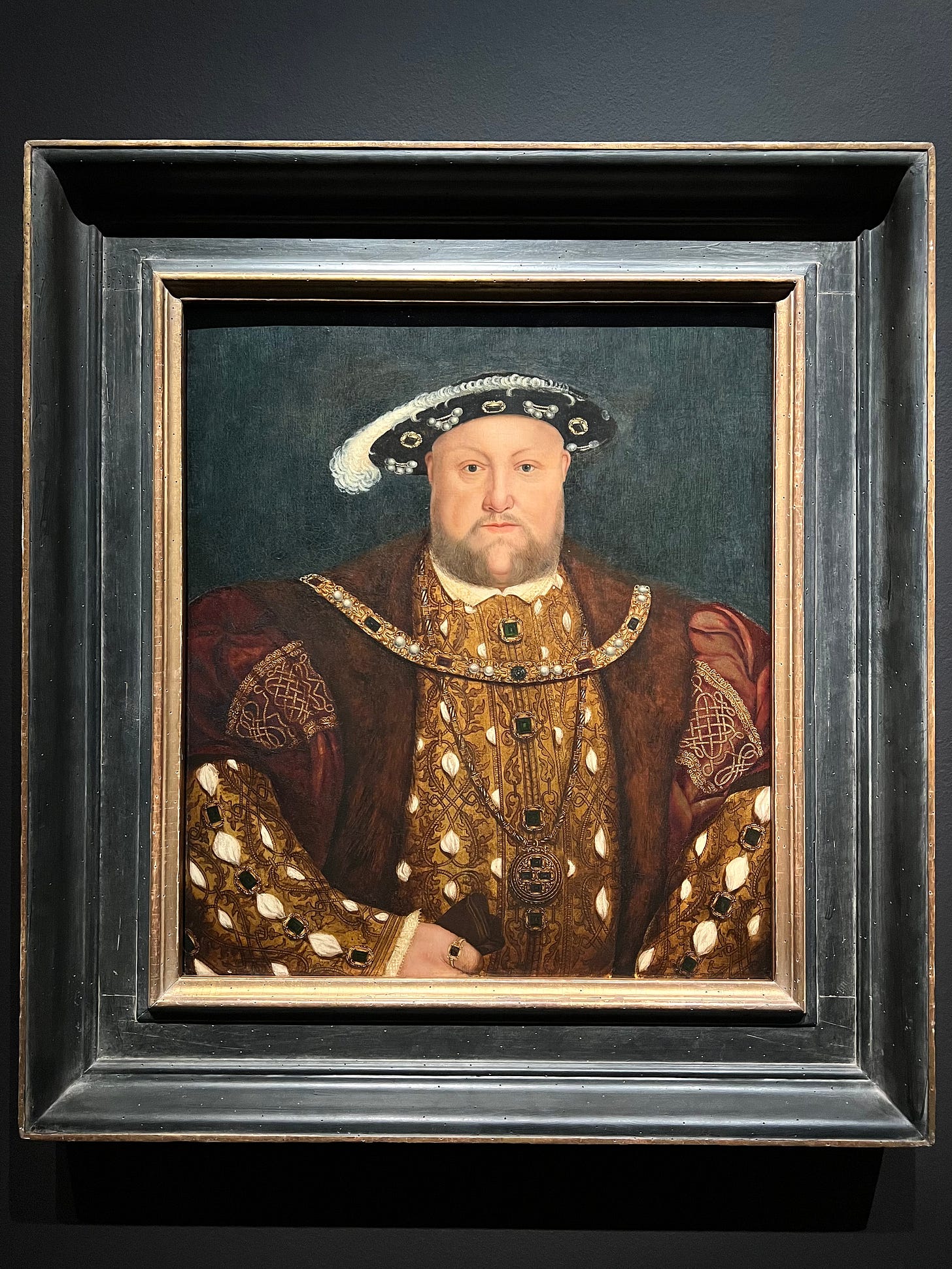

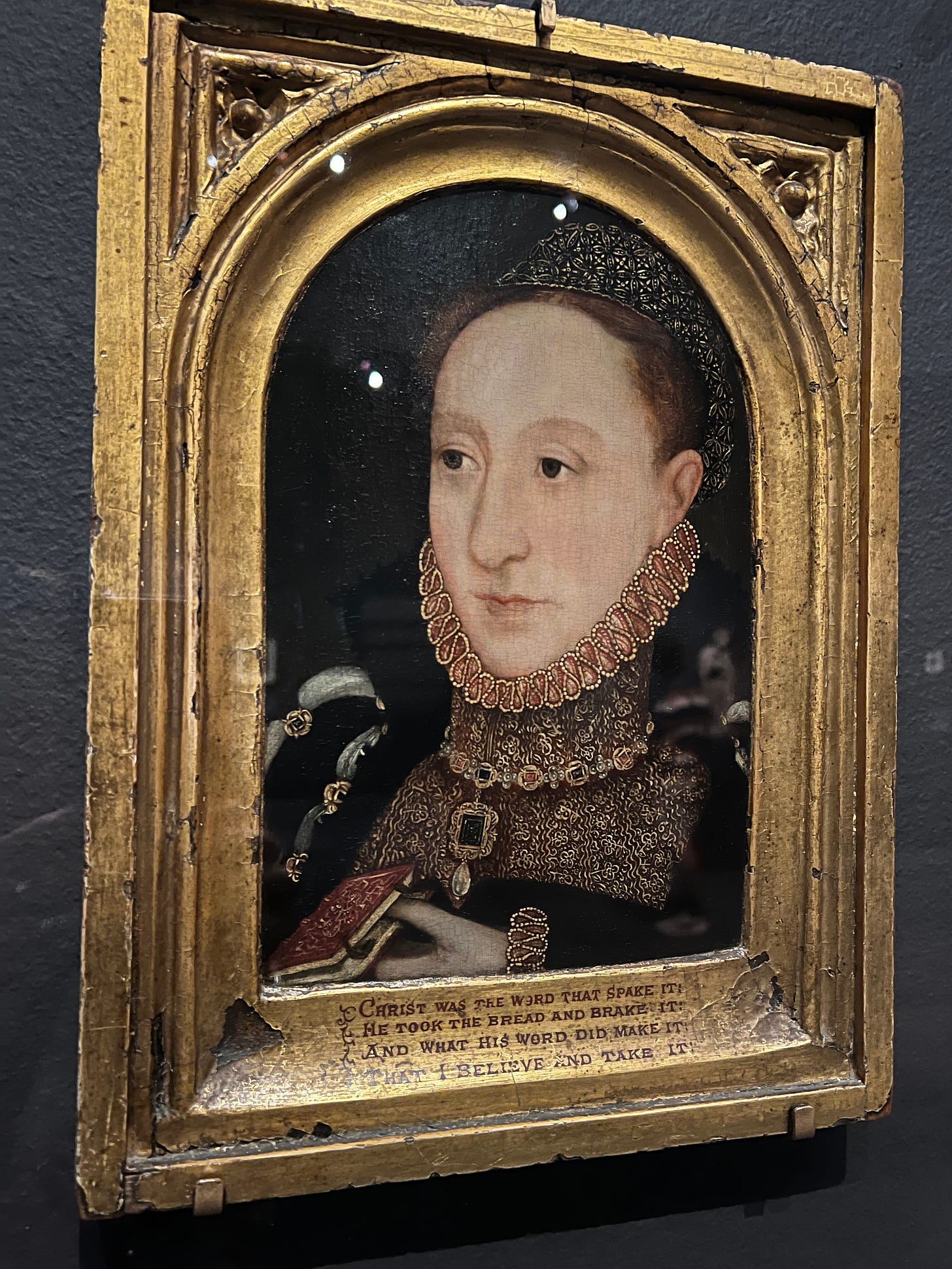
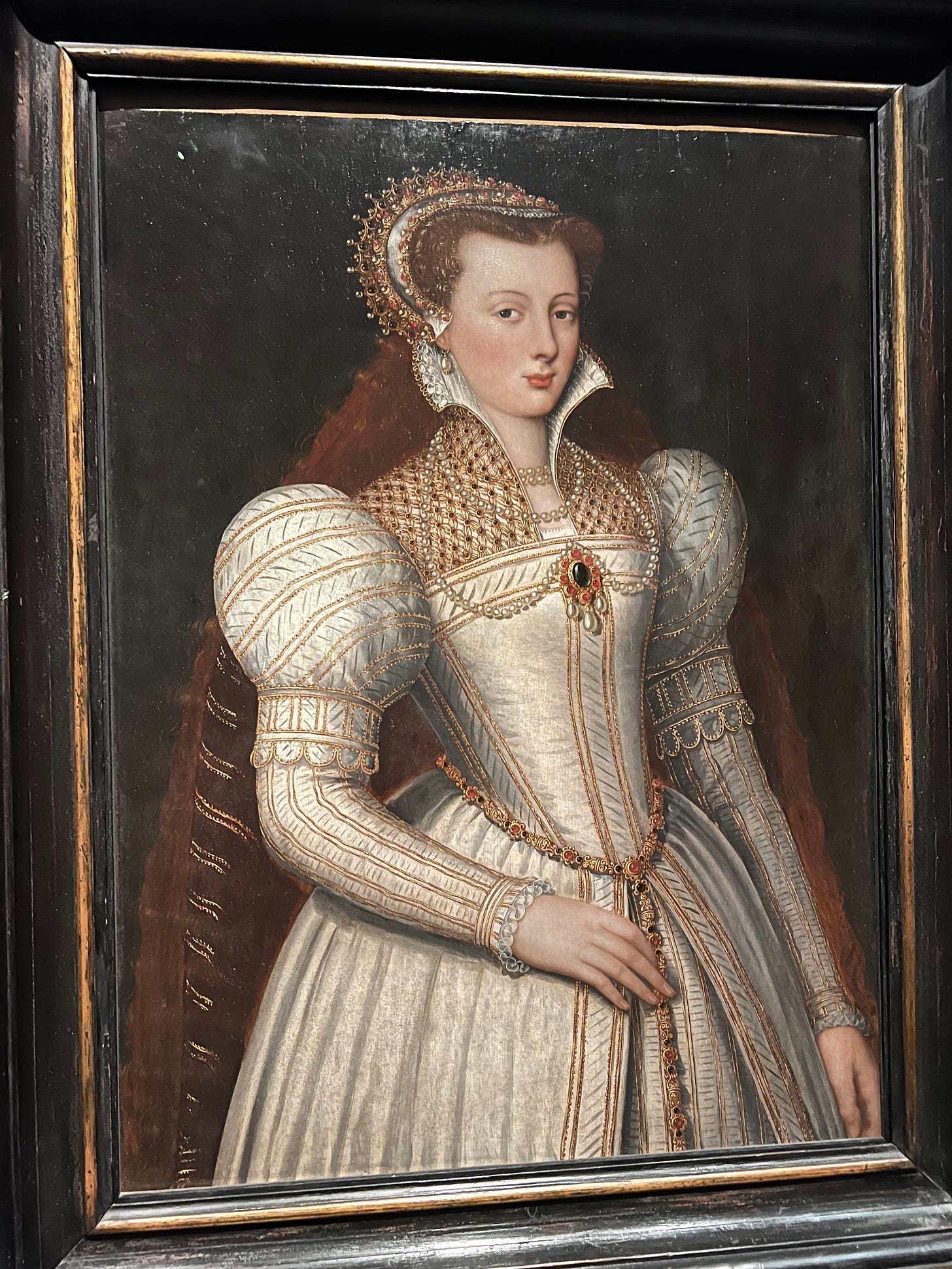
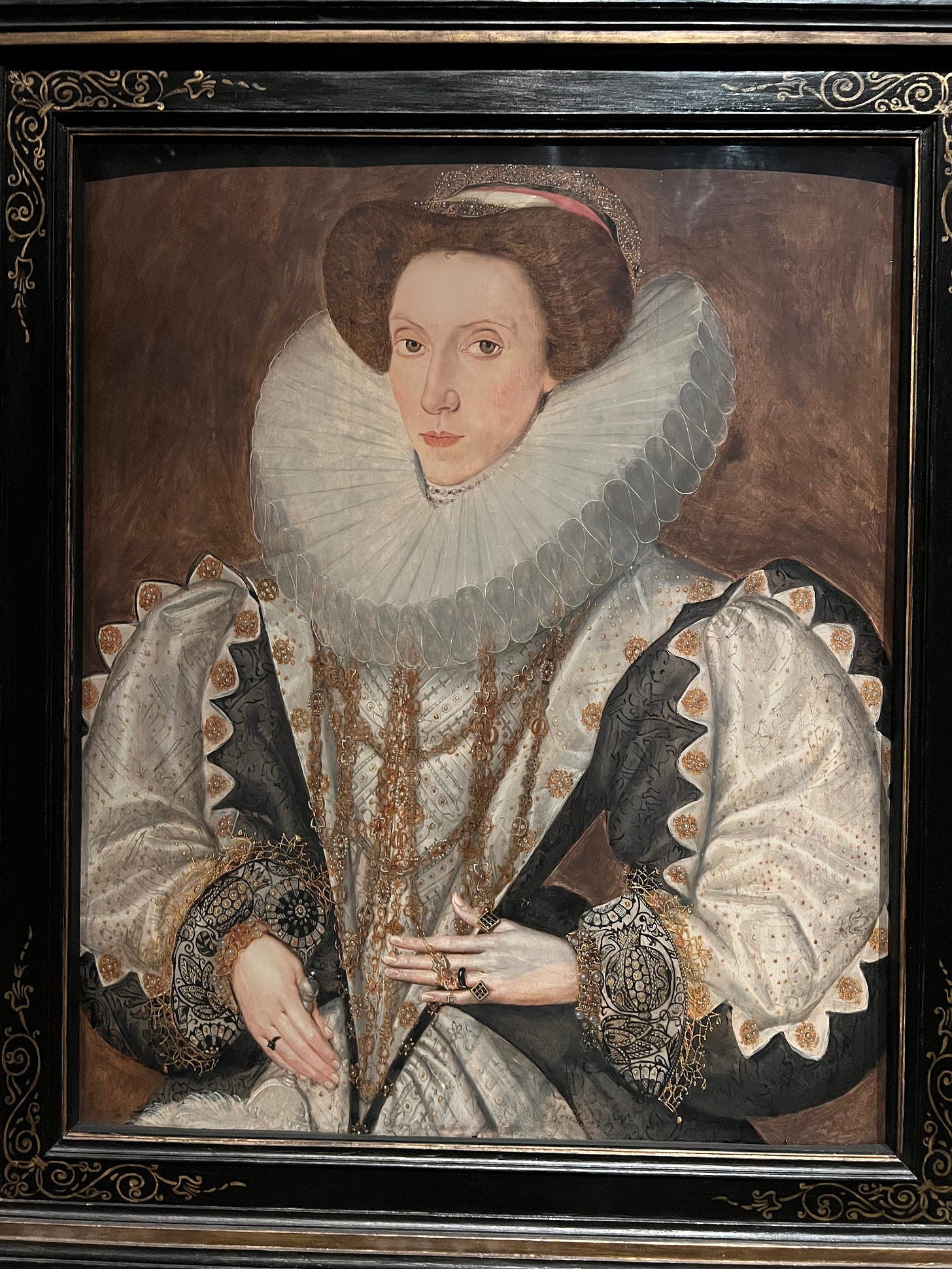

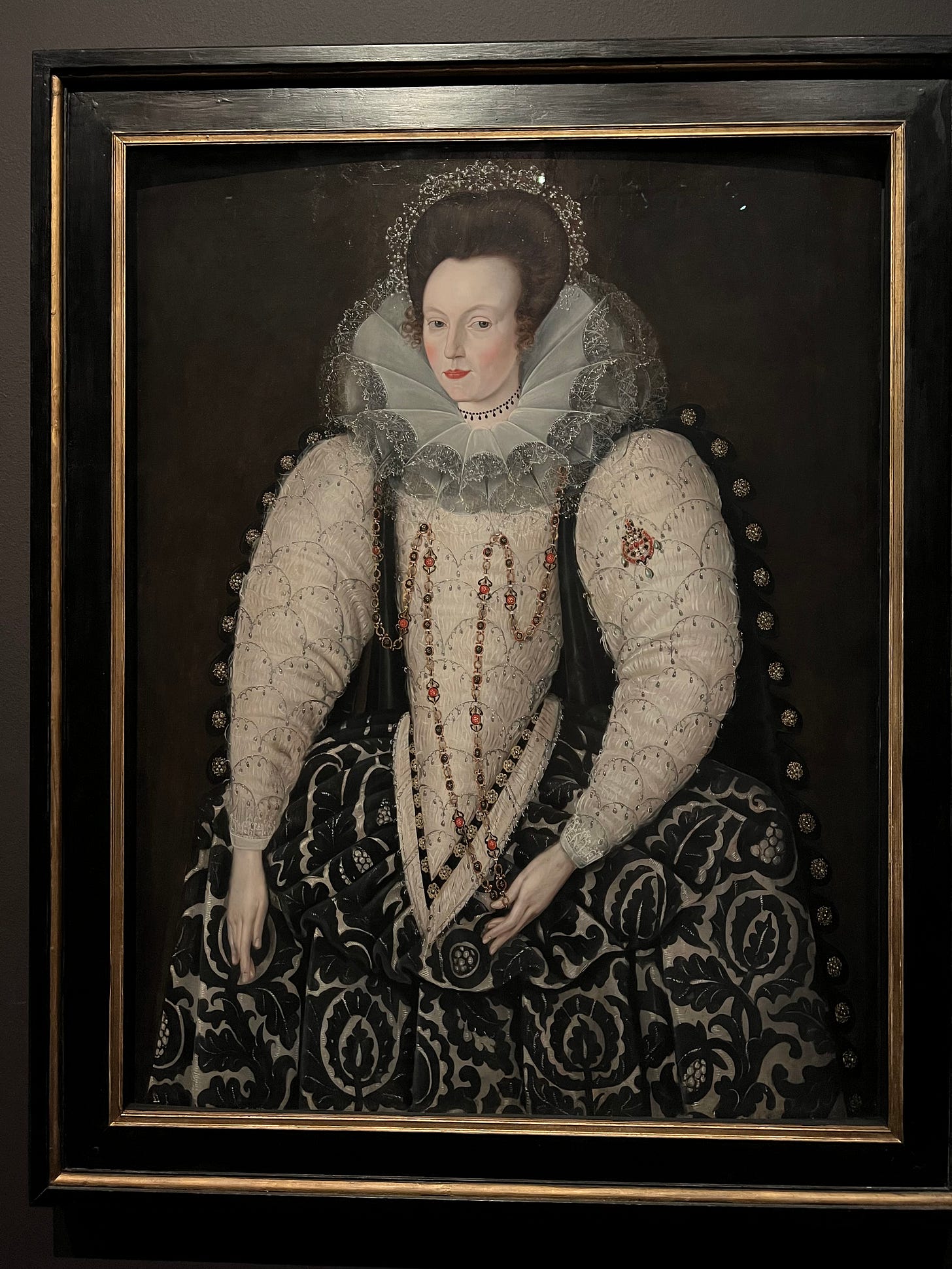
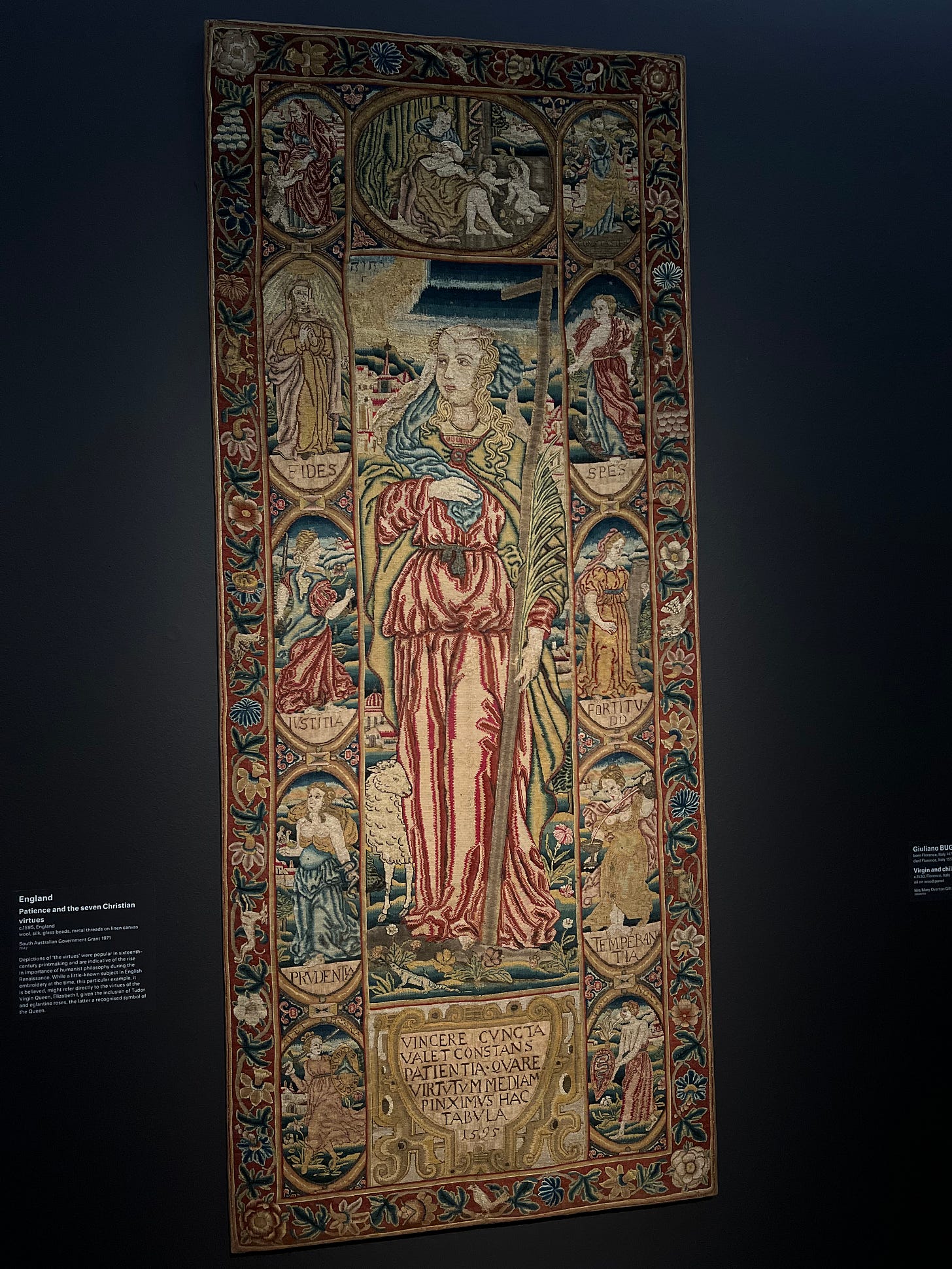
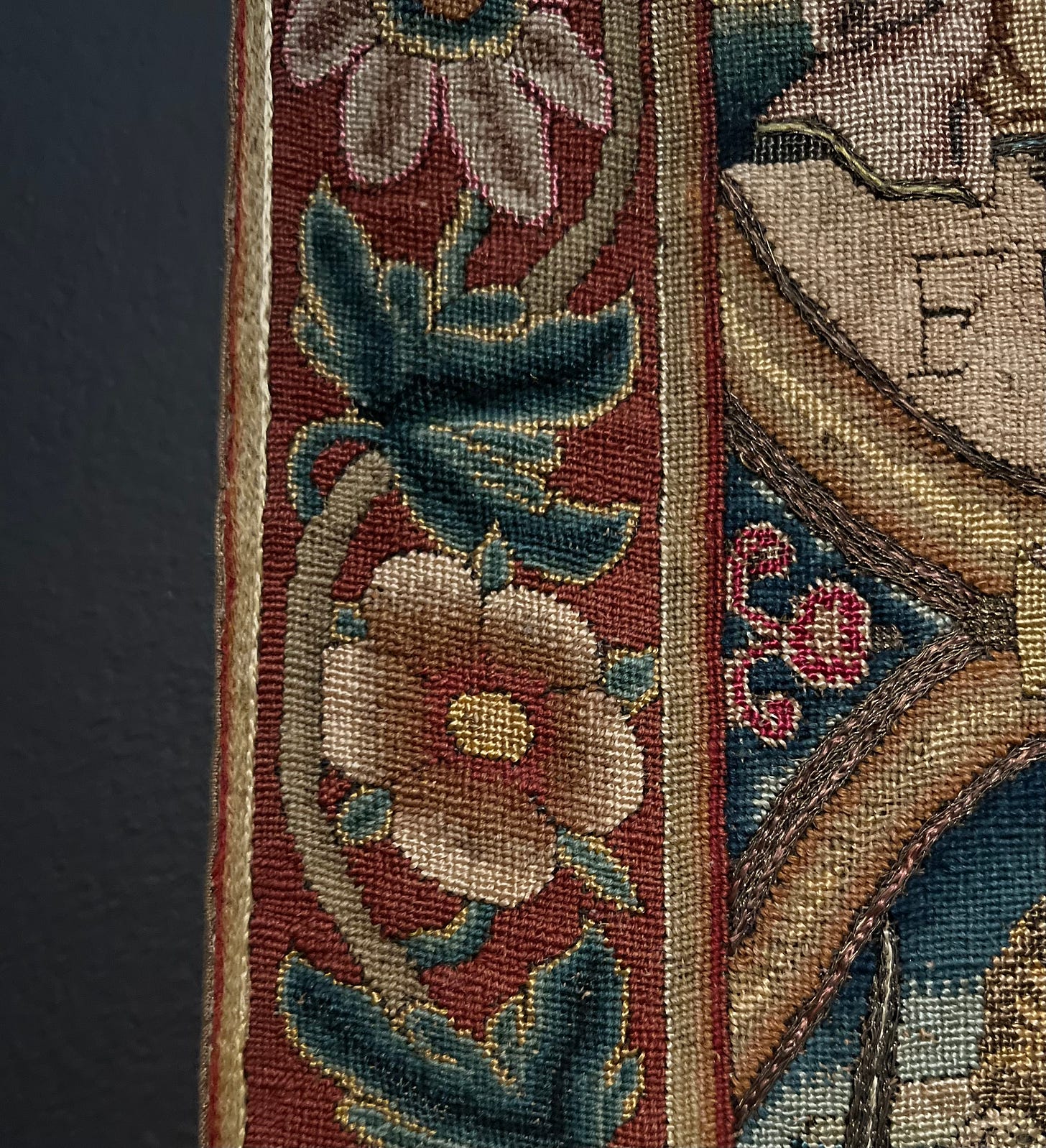
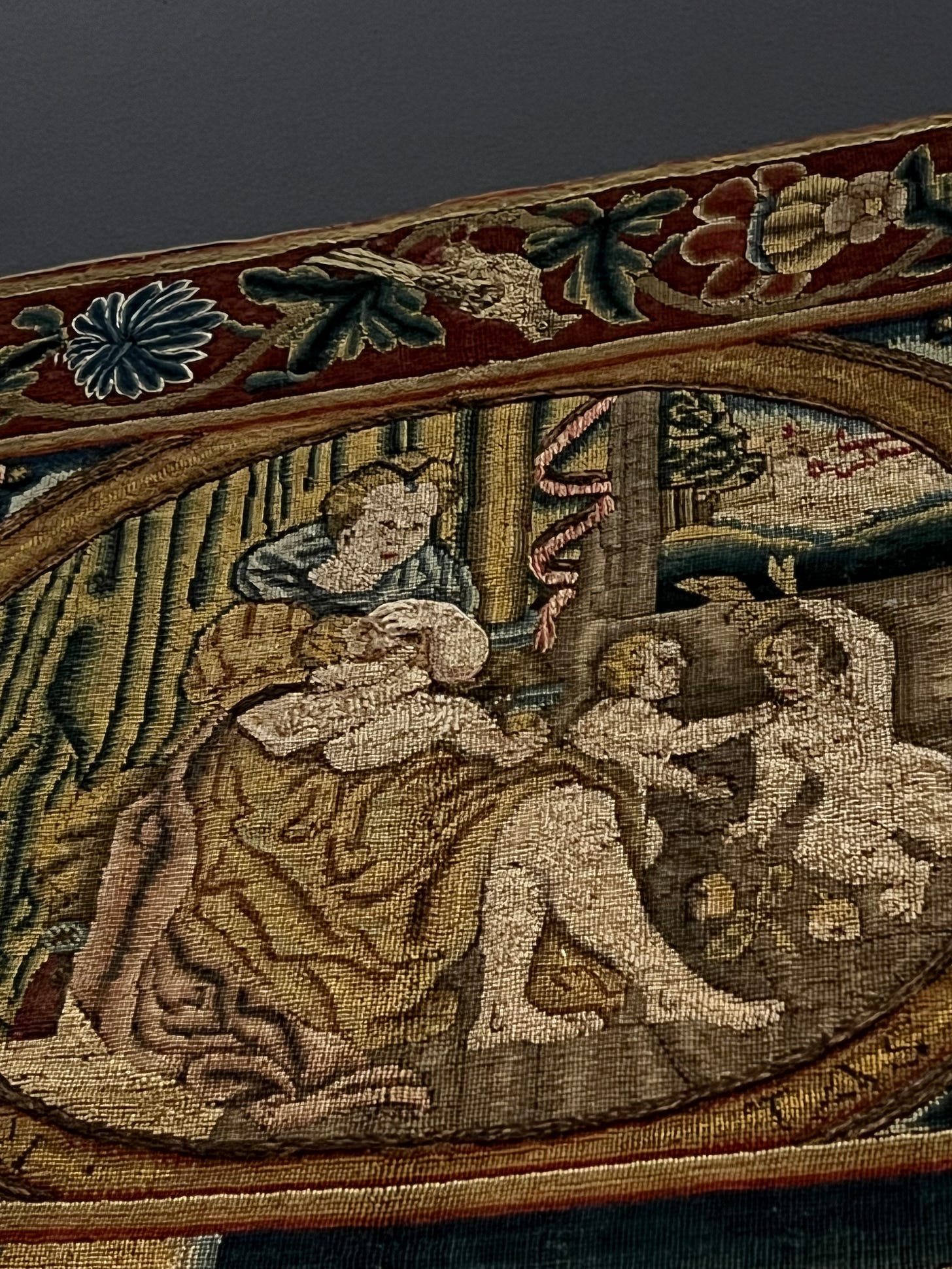
I live in Adelaide and have seen this exhibition. But after your review, think I will go take another look..
Note there is a Viking Exhibition on too at tge museum currently. All the way from Scotland.
Incredible paintings, Natalie! xx